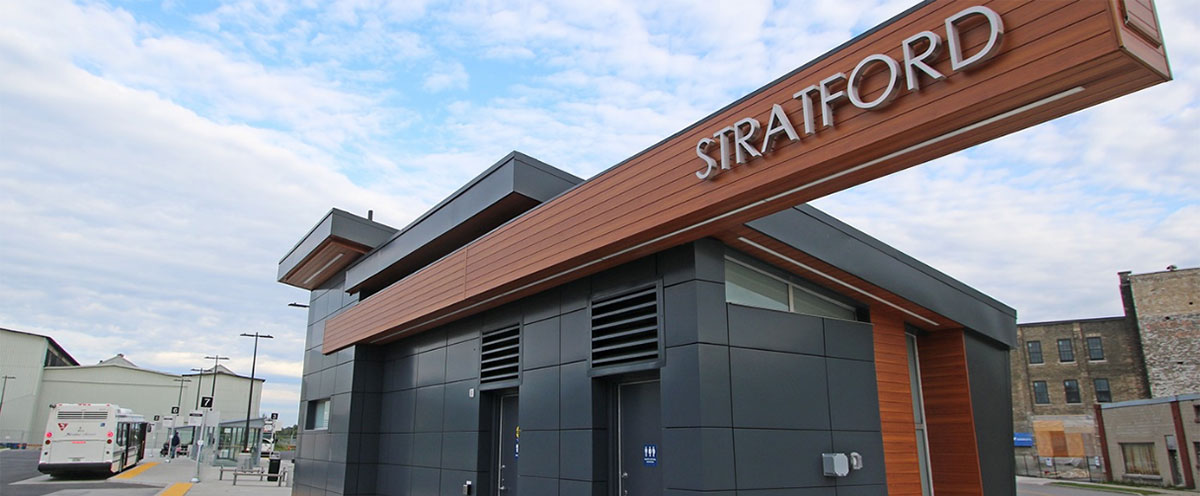National Day for Truth and Reconciliation

The City of Stratford is committed to supporting the continuous process of truth and reconciliation year-round. This page offers resources and educational materials to encourage ongoing learning, reflection, and action.
Land Acknowledgement
We acknowledge that Stratford is positioned on the traditional territory of the Haudenosaunee, Anishinaabe and the Neutral (Attawandaron) peoples. As we gather, we are reminded that the City of Stratford is situated on treaty land that is steeped in rich Indigenous history and home to many First Nations, Métis, and Inuit peoples today. We acknowledge that Stratford is situated on land that was shared between the Haudenosaunee, Anishinaabe and the Neutral (Attawandaron) peoples. We are grateful to have the opportunity to live, work, and play on this land.
Dates of Significance
The City of Stratford is working to raise awareness and provide education about important Indigenous commemorative and awareness days that occur each year.
| Red Dress Day (May 5) |
|
The National Day of Awareness for Missing and Murdered Indigenous Women and Girls and 2SLGBTQ+ People (MMIWG2S), also known as Red Dress Day is recognized across Canada on May 5. On Red Dress Day, we honour and bring awareness to the thousands of missing and murdered Indigenous women, girls, and 2SLGBTQQIA people. The name “Red Dress Day” was inspired by Métis artist Jaime Black’s The REDress Project. The project features red dresses hung in public spaces as a visual reminder of the women who are no longer with us, and to evoke a presence through the marking of their absence. |
| National Indigenous Peoples Day (June 21) |
|
National Indigenous Peoples Day takes place on the summer solstice, the longest day of the year. For generations, many First Nations, Inuit, and Métis communities have celebrated their cultures, languages, and traditions at this time of year. The summer solstice holds deep spiritual and cultural significance for many Indigenous Peoples, marking a time of renewal, connection, and celebration. It's a time to recognize and celebrate the traditions, cultures, and contributions of First Nations, Inuit and Métis. |
| National Day for Truth and Reconciliation (September 30) |
|
Each year, September 30 marks the National Day for Truth and Reconciliation. This is a day for all Canadians to reflect on the history and legacy of the residential school system, remember the victims and Survivors, their families and communities. Public commemoration of the tragic and painful history and ongoing impacts of residential schools is a vital component of the reconciliation process. To assist residents in accessing resources and events, the City has compiled a comprehensive listing featuring various events and information for National Day for Truth and Reconciliation. These events are hosted by external sources and partner organizations. For the most current and accurate information, please refer to the host organization’s website prior to attending an event.
|
| Treaties Recognition Week (November) |
|
Treaties Recognition Week honours the importance of Treaties and helps Ontario students and residents understand the significance of Treaty rights, Treaty relationships and their relevance today. |
Treaties
Treaties are agreements that set out the rights, responsibilities and relationships of First Nations and the federal and provincial governments. This territory is governed by two treaties.
| The Dish with One Spoon Wampum Belt Covenant of 1701 |
|
The Dish with One Spoon Wampum Belt Covenant of 1701 was developed by Indigenous People of the Great Lakes region and northeastern North America to describe how the land can be shared to the mutual benefit of all people living on the land. A “dish with one spoon” was referenced by Indigenous peoples who make treaties with each other to avoid violent conflict. The “dish” represents the land to be shared peacefully, and the “spoon” represents the individuals living on and using the resources of the land in a spirit of mutual cooperation. Often, a bowl or kettle was referred to rather than a dish. One of the most known wampum belt is the one treaty made between the Haudenosaunee and the Anishinaabe peoples before the coming of the Europeans. |
| The Huron Tract Treaty of 1827 |
|
The Huron Tract Treaty of 1827 included southwestern Ontario bordering on Lake Huron and Lake Erie. This treaty uses the intersection of the St. Clair River and “a hickory tree marked with a broad arrow on two sides” to mark part of its boundary. This agreement was made between eighteen Anishinaabek Chiefs and the Canada Company. |
Resources
Browse the list of resources below for further learning.
| List of Resources |
|
If you are a Survivor and need emotional support, a national crisis line is available 24 hours a day, seven days a week: Residential School Survivor Support Line: 1-866-925-4419
The Hope for Wellness Helpline is available to all Indigenous people across Canada. Experienced and culturally competent counsellors are reachable by telephone and online ‘chat’ 24 hours a day, 7 days a week. The toll-free Help Line is reached at 1-855-242-3310 or connect to the online chat at www.hopeforwellness.ca
